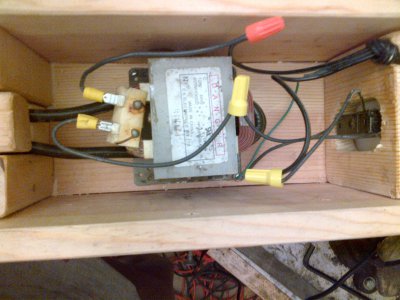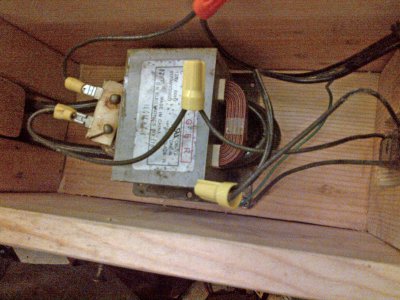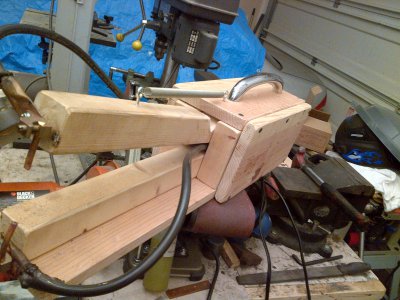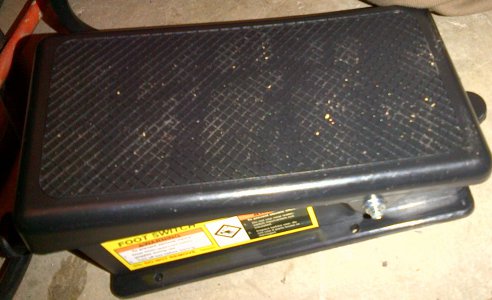Guess I should have provided my source and photos. Here's the youtube I followed, pretty much the same without the frills:
The advantage of that design (not my design, not my youtube video, I just copied it) is that the arms come out and you can spot weld things in hard to reach places a spot welder COTS type can't
Here's photos of my spot welder. I use a foot pedal for turning power on and off. Additionally, there's alight switch in the back of my unit that turns the power on (so 2 power devices). The coating on the wires gets pretty hot when welding, you can see a partial melt in one of the photos. I never did take a voltmeter or amp meter. The winding with the thick part has 2 loops.




The advantage of that design (not my design, not my youtube video, I just copied it) is that the arms come out and you can spot weld things in hard to reach places a spot welder COTS type can't
Here's photos of my spot welder. I use a foot pedal for turning power on and off. Additionally, there's alight switch in the back of my unit that turns the power on (so 2 power devices). The coating on the wires gets pretty hot when welding, you can see a partial melt in one of the photos. I never did take a voltmeter or amp meter. The winding with the thick part has 2 loops.





